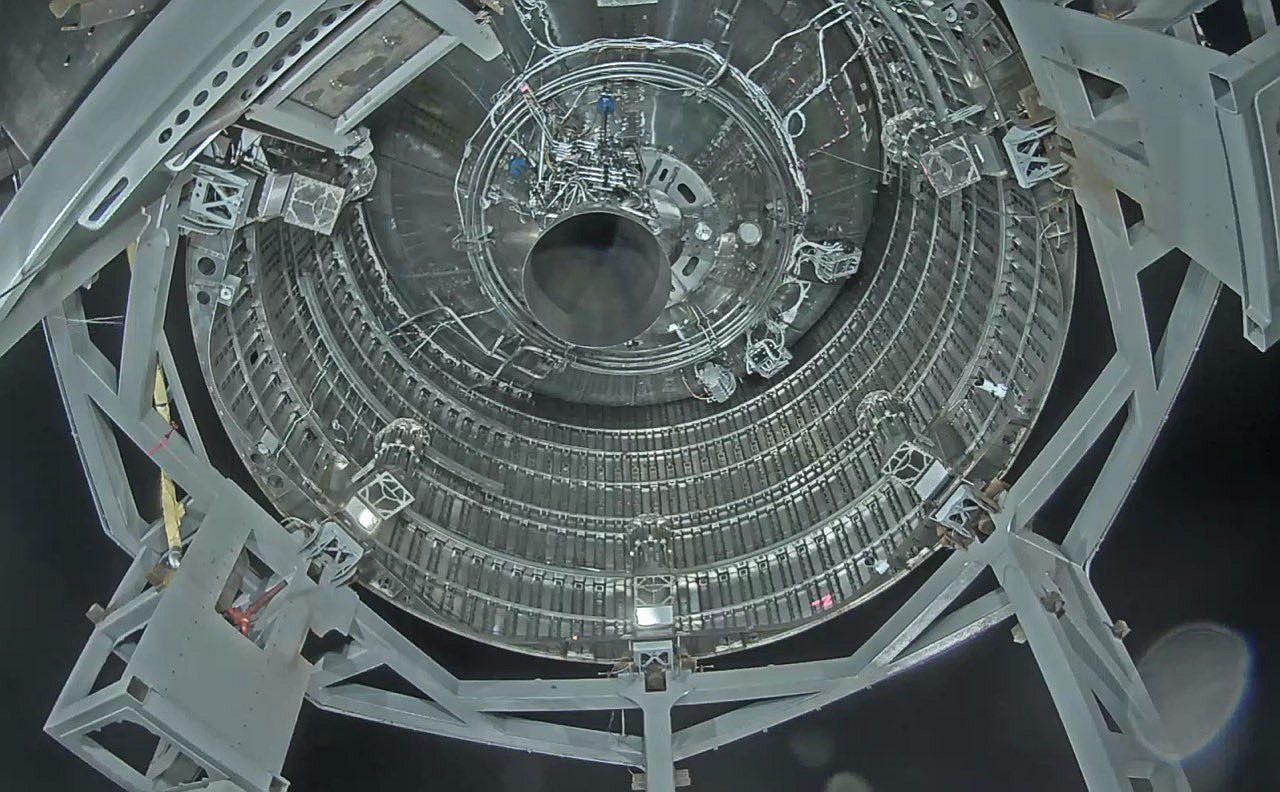Last week, SpaceX passed another milestone in the development of its Starship prototype. This was the crucial engine static fire test, which saw the fourth full-scale Starship prototype (SN4) ignite a fully-integrated Raptor engine for the first time. The successful test took place on Tuesday night (May 5th) at 08:57 PM local time (09:57 PM EDT; 06:57 PM PDT) and saw the Raptor engine ignite and fire for four full seconds.
Shortly after the test concluded, Elon Musk confirmed that the test was a success via Twitter, saying, “Starship SN4 passed static fire.” This comes eight days after SpaceX successfully completed another important milestone. This was the pressure load test, where the prototype’s liquid methane and liquid oxygen (LOX) tanks were filled with liquid nitrogen to see how well they handled being fully-pressurized.
Success in that (and in this latest) test is certainly good news given the setbacks that SpaceX has experienced of late. These happened back in November of 2019 and February of 2020, where the Mk1 and SN1 prototypes both suffered structural failures during the pressure load test and exploded on the landing pad.
Musk also shared details of the test, indicating that the SN4 achieved a high pressure of 7.5 bar and a high engine thrust load at cryogenic temperatures. Sharing a picture of the underside of the SN4, he also remarked that the single Raptor engines looked “sm?l”, and reminded people that the Super Heavy booster will have 31 Raptor engines providing it with thrust.
The static fire test was also captured on video by Chris Bergin, the managing editor of NASA SpaceFlight who was on-sight to witness it. The video was shared via Twitter shortly thereafter with the caption, “First time a Raptor has fired up on a SpaceX Starship. They’ll be reviewing, so let’s hope the data shows it was a good test!”
SpaceX engineers are now reviewing the data and preparing for the next step, which could either be another static fire test, or a small “hop test.” Similar to what was done with the Starship Hopper test vehicle, this will consist of the prototype flying to an altitude of 50 meters (164 ft) and landing again.
If all goes well, Musk may choose to make a 150-meter (490 ft) hop test, which will likely involve the next prototype (SN5). Originally, Musk and his engineering teams hoped to do with the Mk 1, followed by orbital test flights using the Mk 2 and Mk 3. But due to delays imposed by the loss of the Mk 1 and SN2, SpaceX has been taken a more measured and cautious approach.
In similar news, SpaceX was recently awarded a $135 million contract through NASA’s Next Space Technologies for Exploration Partnerships (NextSTEP-2) program. For the purpose of providing logistical support and crew transport services to Project Artemis, SpaceX has been tasked with developing a version of the Starship to act as a lunar lander.
With this latest success under their belt (and hopefully, no more exploding prototypes!), SpaceX is likely to have the Starship ready to fly in time for humanity’s long-awaited return the Moon! In so doing, Musk will also be able to make good on his promise that the Starship will be able to send humans to the Moon by the 2020s.
Further Reading: ArsTechnica, Twitter

